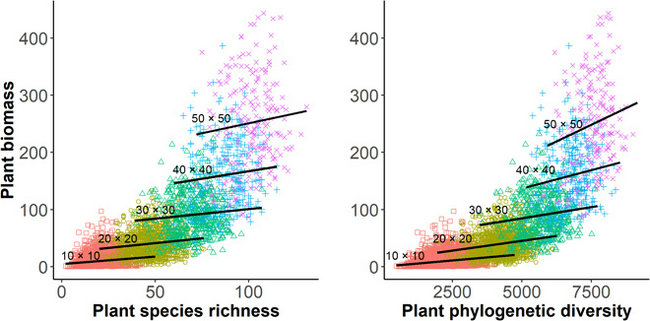Prof. Shixiao Yu’s group in the School of Life Sciences has made important progress in the field of biodiversity and ecosystem function
Source: School of Life Sciences
Written by: School of Life Sciences
Edited by: Wang Dongmei
Recently the team of Prof. Shixiao Yu from the School of Life Sciences at Sun Yat-sen University published a research paper, entitled "Soil microbes drive phylogenetic diversity-productivity relationships in a subtropical forest”, in
Science Advances (IF=12.8). This study highlights that soil pathogenic fungi play a key role in tree diversity-productivity relationships, and that increasing phylogenetic diversity may counteract negative effects of plant-soil feedback. Prof. Shixiao Yu and Prof. Xubing Liu are the co-corresponding authors, and Dr. Minxia Liang is the first author.
Biodiversity forms the foundation of ecosystem services that critically contribute to human being. The supporting, provisioning, regulating, and cultural services provided by biodiversity are essential for human being. Habitat fragmentation caused by human activities, environmental pollution and climate change, as well as unreasonable exploitation and utilization of biological resources, have led to a great loss of biodiversity on a global scale. As a result, more and more scientists are paying close attention to how the loss of diversity affecting ecosystem function. Prof. Yu and coworkers combined extensive field observations and experimental manipulations to explore the formation mechanism of diversity-ecosystem function within the context. They reported that both species richness and phylogenetic diversity were positively correlated with biomass for both adult trees and seedlings across multiple spatial scales, but productivity was best predicted by phylogenetic diversity (as shown in Fig. 1). Subsequently, they observed a significant positive relationship between phylogenetic diversity and productivity in the non-sterile soil only (Fig. 2). Further investigation shown that root fungal diversity was positively correlated with plant phylogenetic diversity and species richness, while the relative abundance of putative pathogens was negatively related to plant phylogenetic diversity.

Fig. 1 Results of regression models predicting biomass production in response to species richness or Faith’s phylogenetic diversity of tree communities.

Fig. 2 The relationship between phylogenetic diversity and total plant biomass production of (a) all four species, (b) only C.
fissa, and (c) all species excluding C.
fissa.
This work has solved the long-standing problem of understanding the role of pathogenic fungi in biodiversity-productivity relationship, especially in forest ecosystem. It makes up for the shortcomings of existing researches on “biodiversity - productivity relationship”, which mainly focus on grassland ecosystem. These powerful conclusions not only shed light on the mechanisms of biodiversity-ecosystem function but also provide an important theoretical basis for biodiversity conservation.
This work was supported by National Key Research and Development Program of China (Project No. 2017YFA0605100), the National Natural Science Foundation of China (NSFC grants 31870403, 31500334, 31770466).
Access to this paper:
https://advances.sciencemag.org/content/5/10/eaax5088
